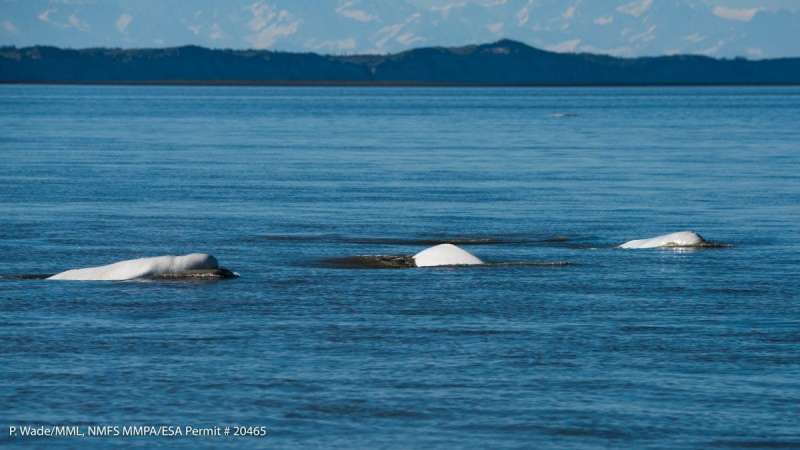Beluga whales in Cook Inlet, Alaska are critically endangered. Despite protections that have been in place 2006, beluga whales living in the Cook Inlet region of Alaska are still declining, currently numbering approximately 300 members.
A team of scientists from Woods Hole Oceanographic Institution (WHOI) and NOAA Fisheries are collaborating to help stem the decline of a critically endangered population of beluga whales in the Cook Inlet, Alaska. A study recently published in Animal Microbiome outlines important first steps in understanding epidermal microbial communities in beluga whales, as well as their role in beluga health. This study is one piece of a larger puzzle for researchers looking at everything from social structure to acoustic interference and contaminants, all with the shared mission to reverse the dire decline of this vulnerable population.
Beluga whales in Cook Inlet, Alaska are critically endangered. Despite protections that have been in place 2006, beluga whales living in the Cook Inlet region of Alaska are still declining, currently numbering approximately 300 members. Scientists are confounded as to why their numbers are still so low, and are considering all possible reasons, including ocean contamination, pathogens, noise, habitat degradation, ship-strikes, disease, and declines in available prey food. Many other populations of beluga whales remain healthy, including the neighboring population in Bristol Bay, Alaska.
Scientists from WHOI and NOAA used skin biopsies obtained from Cook Inlet and Bristol Bay belugas to closely study their skin microbiomes, with a goal of developing a baseline for comparisons among healthy and affected populations, and a health index that will allow researchers to identify sick individuals with minimally invasive sampling.
"After a huge research effort in human microbiomes, science is beginning to show a lot of links between microbiomes and health in humans—and an emerging field of research is showing that may be true for whales, as well," says Amy Van Cise, a guest investigator at WHOI and postdoctoral research biologist at NOAA. "The question is whether we can use that to aide in efforts to conserve this population before it is too late."
"Initial indications show that environment has a strong influence on skin microbiomes in these populations, but there is much more work to be done—and quickly—in order to reverse these dire population trends," adds Paul Wade, the lead for beluga research at Alaska Fisheries Science Center, NOAA Fisheries.
More information: Amy M. Van Cise et al. Skin microbiome of beluga whales: spatial, temporal, and health-related dynamics, Animal Microbiome (2020). DOI: 10.1186/s42523-020-00057-1
Provided by Woods Hole Oceanographic Institution























